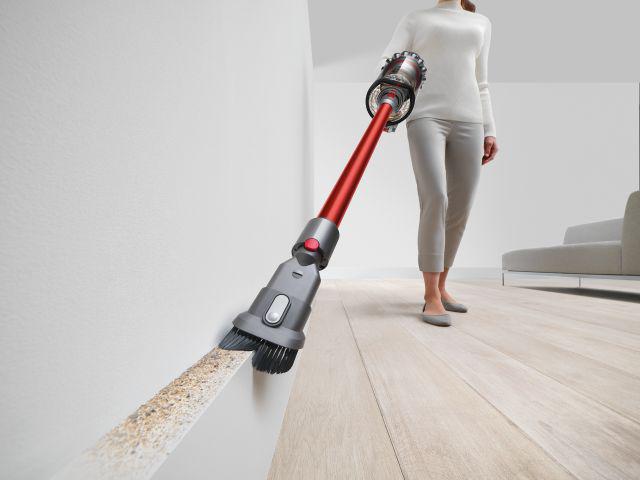The hundreds of beeps your technology makes to communicate with you often go unnoticed | Photo by Kyle Johnston on Unsplash
House dust mites, and their faeces which contain microscopic enzymes, are common in house dust. House dust mites feed on moulds, as well as animal and human skin flakes. They flourish in textiles, such as bedding, mattresses, upholstered furniture like sofas and carpets.
“Household dust can be a concern, as it may contain allergens such as dust mite faeces and pollen. Mattresses, bedding, upholstery and carpets can all accumulate unseen dust,” says Gem McLuckie, Advanced Research Scientist in Microbiology at Dyson. Gem is an expert in the biological composition of our homes, having worked in a number of health and research institutions before joining Dyson two years ago. Her knowledge of household dust is enough to make your skin crawl.
“There are a lot of misconceptions about how to best remove the allergens found in dust from your home,” says Gem. “All of our research has shown that the best way to deal with bacteria, pollen and dust mite allergens is to remove them from your home completely. That’s why we focus our efforts on designing vacuum cleaners that pick the dust up, have cyclones that are incredibly efficient to keep it in the machine, as well as filters and seals to make sure it doesn’t get emitted back into your home.”
“It can be hard to know where to start, but splitting tasks over a week can make deep cleaning more manageable”.
Monday
- Wash bedding on a 140°F or 195°F wash to help to break down and reduce allergens
- Wash or replace duvets and pillows to reduce the amount of dust mites and skin flakes present in your bed.
- Vacuum both sides of your mattress to remove dust mites and skin flakes.
Tuesday
- Remove dust from kitchen cupboard tops, using either a vacuum with an advanced filtration system or by dusting with a clean damp cloth or cleaning wipes.
- Clear kitchen counters and cupboards to deep clean. Vacuum to remove dust and debris, then wash with warm water and detergent. Follow up by drying all surfaces.
- Empty the fridge and freezer, and clean all surfaces with warm water and detergent or cleaning product. Vacuum round the back and under the fridge and freezer, without forgetting the cooler element on the back as this will improve performance.
Wednesday
- Vacuum the places not regularly vacuumed, such as under furniture.
- Vacuum your sofa and armchairs, which can hold large debris along with dust mites, skin flakes and other allergens such as pollen.
- Wash any coverings and cushions to reduce the level of dust caught within them.

Identify the areas in your home that aren't cleaned regularly.
Thursday
- A lot of dust can gather in curtains and blinds. Make sure you vacuum them with a soft brush tool or launder them if possible and practical.
- Remove dust from walls by dusting with a damp cloth, cleaning wipes or using a vacuum with advanced filtration. Dust on certain wall types can contribute towards the growth of mold.
Friday
- Dust lights and light fittings. Dust can gather in lampshades and light fittings which can burn on hot bulbs producing VOCs and odor, or be moved around the room by the production of warm air around the bulbs.
- Dust behind radiators – a hidden place often missed during normal cleaning. Significant dust collects behind the radiator and this can be distributed around the room by the air flow produced by the warm air from the radiator.
Top tips
Use either a clean damp cloth or cleaning wipes to trap dust more easily or use a vacuum with an advanced filtration system. A vacuum cleaner with different attachments and strong suction is ideal for removing dust around your home.
Vacuum your home after dusting so that any dust that has been disturbed and placed onto the floor is removed and not redistributed around the home by normal activity – wherever there is dust there is the possibility of dust mites.
[1] Klepeis NE, Nelson WC, Ott WR, et al. The National Human Activity Pattern Survey (NHAPS): a resource for assessing exposure to environmental pollutants. J Expo Anal Environ Epidemiol 2001;11:231-52.
Press contacts
-
LIv Thomas
-




